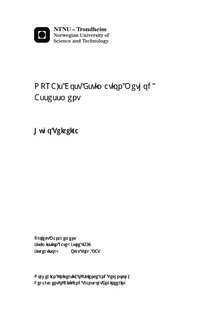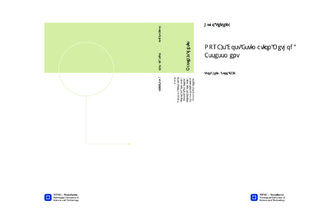| dc.description.abstract | The Norwegian Public Road Administration (NPRA) is the governmental agency that is responsible for the road infrastructure of the country. They are the ones who may have the initiative to start a road project, when a need is found. In addition, all the processes of planning, constructing and operating public roads are taken or supervised and controlled by them.The available amount of funds for investments in roads in Norway has been increasing over the last years. However, the reason for that is directly related with the introduction of road toll and with the money that comes from it. That happened after late 1980s when road tolling became largely adopted around the country. On the other hand, the funds from the national budget have been decreasing, especially in the last decade.Before becoming a reality, a road in Norway usually emerges from a necessity that originates a project that shall start its life time with a conceptualization study. Such study analyses different opinions and solutions that can meet the need and after an external quality assurance may or not be part of the National Transport Plan. The project matures and when defining the Plan of Action main characteristics of the project are set. The project continues its development until a budget is create and proposed in the parliament. Another independent quality assurance should be part of all the documentation that is provided to the parliament in order to fundament their decision.The mentioned external quality assurances are part of the quality assurance scheme that applies to every major public investment in Norway above 750 million Norwegian kroner. For projects bellow 750 million kroner, the first quality assurance (QA1) at the conceptualization evaluation study may be necessary or not. That should be the Ministry of Transport and Communication and the Ministry of Finance deciding. The second quality assurance gate (QA2) applies for all the projects.In parallel to all this legal procedures there is also a project to develop and to manage. A project s attribute that is aim of analysis by the quality assurance scheme is the estimated cost of the project. As mentioned before, NPRA is responsible for preparing cost estimates through the different project phases. To do that NPRA has decided to develop its own cost estimation method that is used in the conceptualization and planning phases. The current version of the handbook 217, which gives the guidelines of the method, has been in use since 2005. Nonetheless, a Norwegian University of Science and Technology s publication in 2012 the shows, from a selected group of projects, that the estimates tend to escalate since the first estimate until project conclusion. In this master thesis, the estimation method is investigated in order to assess the possible causes for such cost development and what can be improved, so the future estimates fluctuate less. The approach used is to assess NPRA s practices and compare them with the practices of a guide published by the United States Government Accountability Office (GAO), which may be adopted by any organization, and is seen as best practices to estimate the cost of public investments.Even though NPRA s estimation method is not as extensive and detailed as GAO s guide, it is a simple and easily understandable method that incorporates most of the recommended best practices studied. Nonetheless some critics and recommendations that could make the method better are given | nb_NO |

